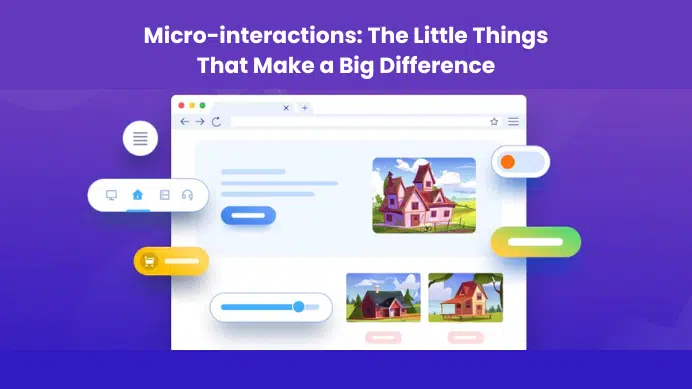Micro-interactions are small, functional animations that provide feedback to the user, such as confirming an action or displaying changes. These seemingly minor details can greatly enhance the user experience and make your designs more engaging and memorable. In this blog post, we’ll explore the benefits of using micro-interactions in UI/UX design and provide tips on how to effectively implement them.
Table of Contents
What are Micro-interactions?
Micro-interactions often overlooked, but they can have a big impact on the user experience. For example, the way a button clicks or the way a form validates can all be considered micro-interactions.
Why are Micro-interactions Important?
Micro-interactions are important because they can:
- Improve the usability of a design. Micro-interactions can provide clear and concise feedback to users, which can help them to understand what is happening and how to interact with the design. For example, a button that changes color when it is clicked can provide feedback to the user that the button has been activated.
- Increase the engagement of users. Micro-interactions can be used to add a sense of fun and interactivity to a design, which can keep users engaged. For example, a loading animation that changes shape can keep users entertained while they wait for a page to load.
- Make a design more memorable. Micro-interactions that are well-designed and unexpected can make a design more memorable for users. For example, a form that validates with a funny sound can make the user smile and remember the experience.
How to Use Micro-interactions
There are a few things to keep in mind when using micro-interactions in your designs:
- Make them clear and concise. Users should be able to understand what a micro-interaction is and how to interact with it without having to think too hard. For example, a button should have a clear label and a clear action.
- Make them consistent. Micro-interactions should be consistent with the overall design of the interface. This will help users to learn how to interact with them quickly and easily. For example, all buttons on a website should have the same look and feel.
- Make them unexpected. Micro-interactions that are unexpected can add a sense of fun and surprise to a design. However, it is important to make sure that they are not too unexpected, or users may become frustrated. For example, a loading animation that changes shape every time it is used can be unexpected and fun.
- Test them with users. It is always a good idea to test micro-interactions with users before you release them to the public. This will help you to identify any potential problems and make sure that they are effective.
Takeaways
- Micro-interactions provide instant visual feedback, enhance engagement, and convey information more effectively.
- They personalize the user experience and make your designs stand out from competitors.
- To effectively use micro-interactions, identify key interactions, keep them subtle, provide visual cues, consider user context, and test and iterate.
Conclusion
Micro-interactions may be small, but they have a significant impact on the user experience. By incorporating these little details into your UI/UX designs, you can greatly enhance engagement, provide feedback, and create a more memorable and delightful user experience. So, pay attention to the little things and let micro-interactions make a big difference in your designs!











